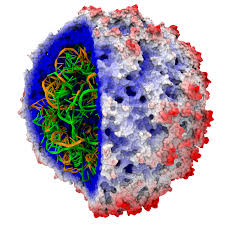Molecular modeling encompasses theoretical and computational techniques used to model or mimic the behavior and the properties of molecules. The simplest calculations can be performed by hand, but inevitably computers are required to perform molecular modeling of any reasonably sized system.
Molecular modeling includes life science modeling; materials modeling; new methods; and computational chemistry.
And these techniques are used in the fields computer-aided molecular design; rational drug design, de novo ligand design, receptor modeling and docking; cheminformatics, data analysis, visualization and mining; computational medicinal chemistry; homology modeling; simulation of peptides, DNA and other biopolymers; quantitative structure-activity relationships (QSAR) and ADME-modeling; modeling of biological reaction mechanisms; and combined experimental and computational studies in which calculations play a major role.
Molecular mechanics is one aspect of molecular modeling, which is used to describe the physical basis behind the models like atoms, which are point charges with an associated mass. And the methods that model the behavior of the system with propagation of time are known as molecular dynamics.
Most molecular modeling studies involve three stages. In the first stage a model is selected to describe the interactions between molecules in the system and the two most common models that are used in molecular modeling are quantum mechanics and molecular mechanics. And these models will enable the energy of any arrangement of the atoms and molecules in the system to be calculated, and allow the modeler to determine how the energy of the system varies as the positions of the atoms and molecules changes. The second stage of a molecular modeling study is the calculation, such as an energy minimization, a molecular dynamics or Monte Carlo simulation, or a conformational search. Finally, in the third stage calculation must be analyzed, not only to calculate properties but also to check that it has been performed properly.
Molecular modeling methods are now routinely used to investigate the structure, dynamics, surface properties and thermodynamics of inorganic, biological and polymeric systems. The types of biological activity that have been investigated using molecular modeling includes enzyme catalysis, protein folding, protein stability, conformational changes associated with biomolecular function, and molecular recognition of proteins, DNA, and membrane complexes.

